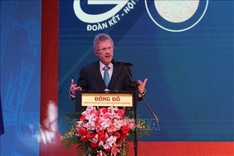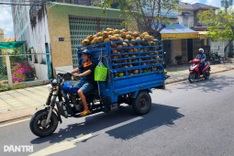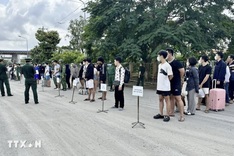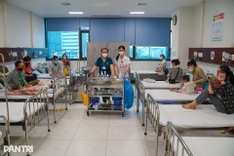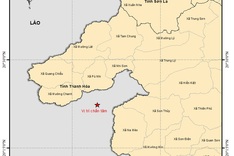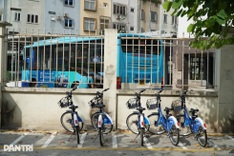Japan, South Korea and Taiwan (China) continue to be the traditional markets that receive the most Vietnamese workers, while some European markets have also increasingly opened up to Vietnamese labour.
The Ministry of Labour, Invalids and Social Affairs said that the overseas employment programme in 2024 saw a rapid recovery, with a steady rise in both the number and quality of workers sent abroad, generating significant foreign currency inflows.
Statistics show that each year, Vietnamese workers abroad contribute between US$3.5 billion and $4 billion to the national economy.
Vietnamese workers were highly regarded for their diligence and skills, the ministry said.
Chairman of the Board of Directors of SONA International Manpower Supply and Trade Joint Stock Company Nguyễn Đức Nam, told the Nhân dân (People) online newspaper that recently, businesses had started focusing on high-income labour markets that demand advanced skills, such as Japan, South Korea and certain European countries like Lithuania and Romania.
The workers specialised in professions like welding and working as mechanical engineers and electricians.
In 2024, the company successfully sent nearly 500 workers to high-income markets with high skill requirements.
Deputy Director of the Hà Nội’s Department of Labour, Invalids and Social Affairs Nguyễn Tây Nam said that after workers return to Việt Nam upon completing their contracts, they become a skilled workforce for the domestic labour market, particularly in companies with investments in Việt Nam from Japan and South Korea.
Challenges
However, the reality is that labour export companies are facing increasing difficulties in fulfilling contracts as the labour pool begins to shrink.
Furthermore, traditional markets such as Japan and South Korea are also undergoing changes in policies regarding the attraction of foreign workers.
Some illegal labour brokerage centres continue to charge excessive fees, creating significant burdens for workers.
Although the number of workers overstaying their contracts and residing illegally in certain markets has decreased, that still presents challenges and adversely affects the reputation of Vietnamese workers.
Plans
Deputy Director General of the Department of Overseas Labour Management Phạm Viết Hương said maintaining and stabilising traditional overseas labour markets, while expanding and developing high-income markets that match the skills and expertise of Vietnamese workers would continue to be the right direction in the coming years.
In addition to traditional markets such as Japan, Taiwan (China) and South Korea, some European countries, such as Germany, Greece and Finland, had welcomed Vietnamese workers, while businesses had actively explored new markets like Denmark and Spain.
Alongside governments' cooperation, businesses were keen to open up new opportunities.
The department would strengthen supervision and guide businesses in preparing labour sources, ensuring that workers receive proper training in both vocational skills and foreign languages before going abroad.
That would include educating workers on the customs, laws and regulations of the countries they would work in and ensuring that workers' rights were protected.
Support would also be provided in job placement upon their return to Việt Nam.
In recent years, Việt Nam has been sending an average of 150,000 workers abroad annually.
From 2021 to 2024, nearly 500,000 Vietnamese workers have gone abroad under contracts. There are currently approximately 700,000 Vietnamese workers employed across 40 countries and territories, covering over 30 different industries.


